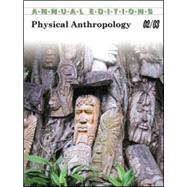| To the Reader | iv | ||||
| Topic Guide | xi | ||||
| Selected World Wide Web Sites | xiv | ||||
| UNIT 1 Natural Selection | |||||
|
|||||
| Unit Overview | xvi | ||||
|
2 | (10) | |||
|
|||||
|
|||||
|
12 | (4) | |||
|
|||||
|
|||||
|
16 | (5) | |||
|
|||||
|
|||||
|
21 | (5) | |||
|
|||||
|
|||||
| UNIT 2 Primates | |||||
|
|||||
| Unit Overview | 26 | (45) | |||
|
28 | (4) | |||
|
|||||
|
|||||
|
32 | (5) | |||
|
|||||
|
|||||
|
37 | (4) | |||
|
|||||
|
|||||
|
41 | (5) | |||
|
|||||
|
|||||
|
46 | (7) | |||
|
|||||
|
|||||
|
|||||
|
53 | (4) | |||
|
|||||
|
|||||
|
|||||
|
57 | (3) | |||
|
|||||
|
|||||
|
60 | (5) | |||
|
|||||
|
|||||
|
|||||
|
|||||
|
65 | (3) | |||
|
|||||
|
|||||
|
68 | (3) | |||
|
|||||
|
|||||
| UNIT 3 Sex and Society | |||||
|
|||||
| Unit Overview | 71 | (40) | |||
|
73 | (5) | |||
|
|||||
|
|||||
|
78 | (4) | |||
|
|||||
|
|||||
|
82 | (6) | |||
|
|||||
|
|||||
|
88 | (7) | |||
|
|||||
|
|||||
|
95 | (4) | |||
|
|||||
|
|||||
|
99 | (5) | |||
|
|||||
|
|||||
|
104 | (4) | |||
|
|||||
|
|||||
|
108 | (3) | |||
|
|||||
|
|||||
| UNIT 4 The Fossil Evidence | |||||
|
|||||
| Unit Overview | 111 | (21) | |||
|
113 | (5) | |||
|
|||||
|
|||||
|
|||||
|
118 | (6) | |||
|
|||||
|
|||||
|
|||||
|
124 | (4) | |||
|
|||||
|
|||||
|
128 | (4) | |||
|
|||||
|
|||||
| UNIT 5 Late Hominid Evolution | |||||
|
|||||
| Unit Overview | 132 | (45) | |||
|
134 | (6) | |||
|
|||||
|
|||||
|
140 | (4) | |||
|
|||||
|
|||||
|
144 | (5) | |||
|
|||||
|
|||||
|
|||||
|
149 | (3) | |||
|
|||||
|
|||||
|
152 | (2) | |||
|
|||||
|
|||||
|
154 | (5) | |||
|
|||||
|
|||||
|
159 | (5) | |||
|
|||||
|
|||||
|
164 | (9) | |||
|
|||||
|
|||||
|
173 | (4) | |||
|
|||||
|
|||||
| UNIT 6 Human Diversity | |||||
|
|||||
| Unit Overview | 177 | (23) | |||
|
179 | (9) | |||
|
|||||
|
|||||
|
188 | (3) | |||
|
|||||
|
|||||
|
191 | (5) | |||
|
|||||
|
|||||
|
196 | (4) | |||
|
|||||
|
|||||
| UNIT 7 Living with the Past | |||||
|
|||||
| Unit Overview | 200 | (19) | |||
|
202 | (5) | |||
|
|||||
|
|||||
|
207 | (5) | |||
|
|||||
|
|||||
|
212 | (4) | |||
|
|||||
|
|||||
|
216 | (3) | |||
|
|||||
|
|||||
| Index | 219 | (3) | |||
| Test Your Knowledge Form | 222 | (1) | |||
| Article Rating Form | 223 |









